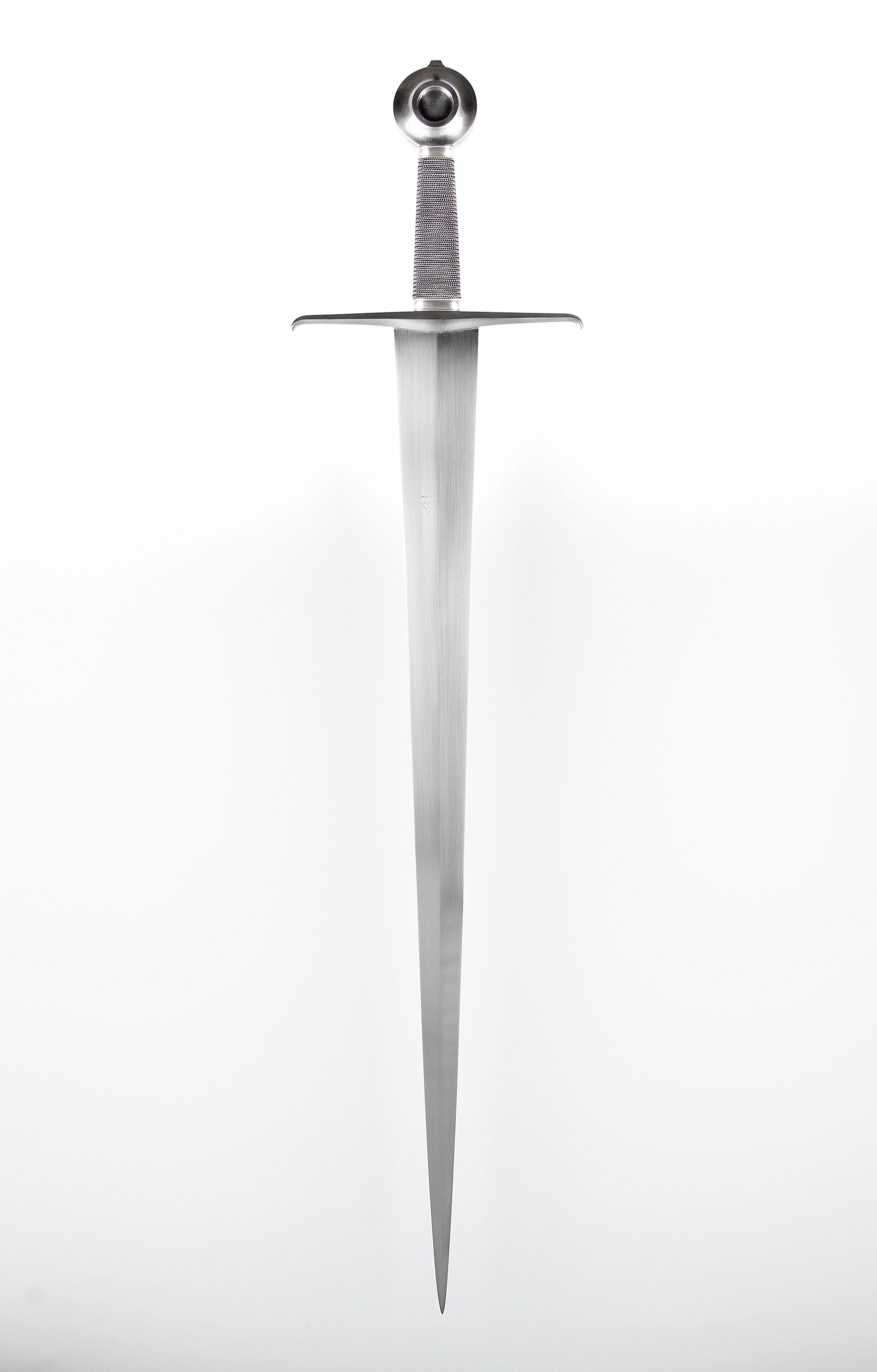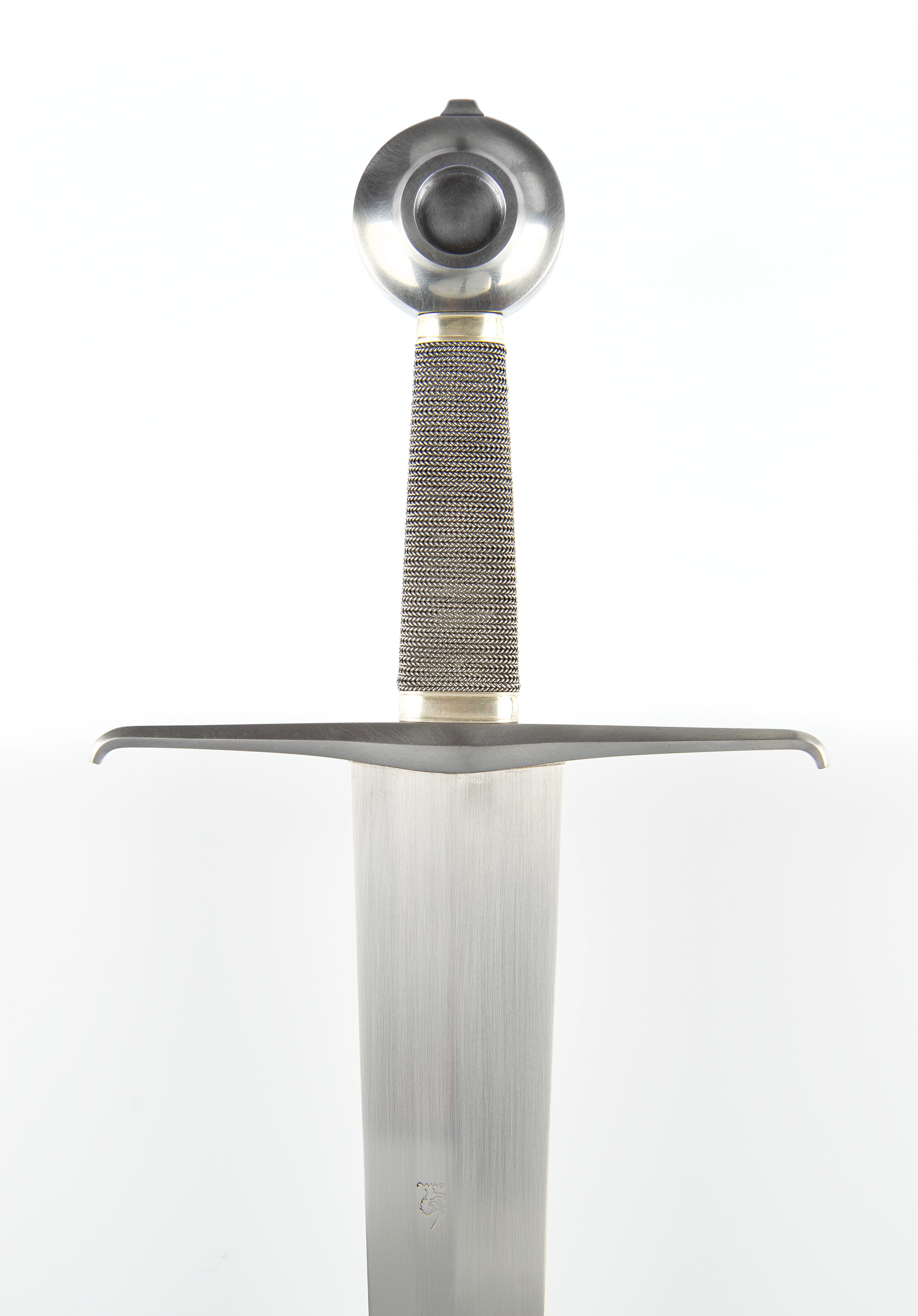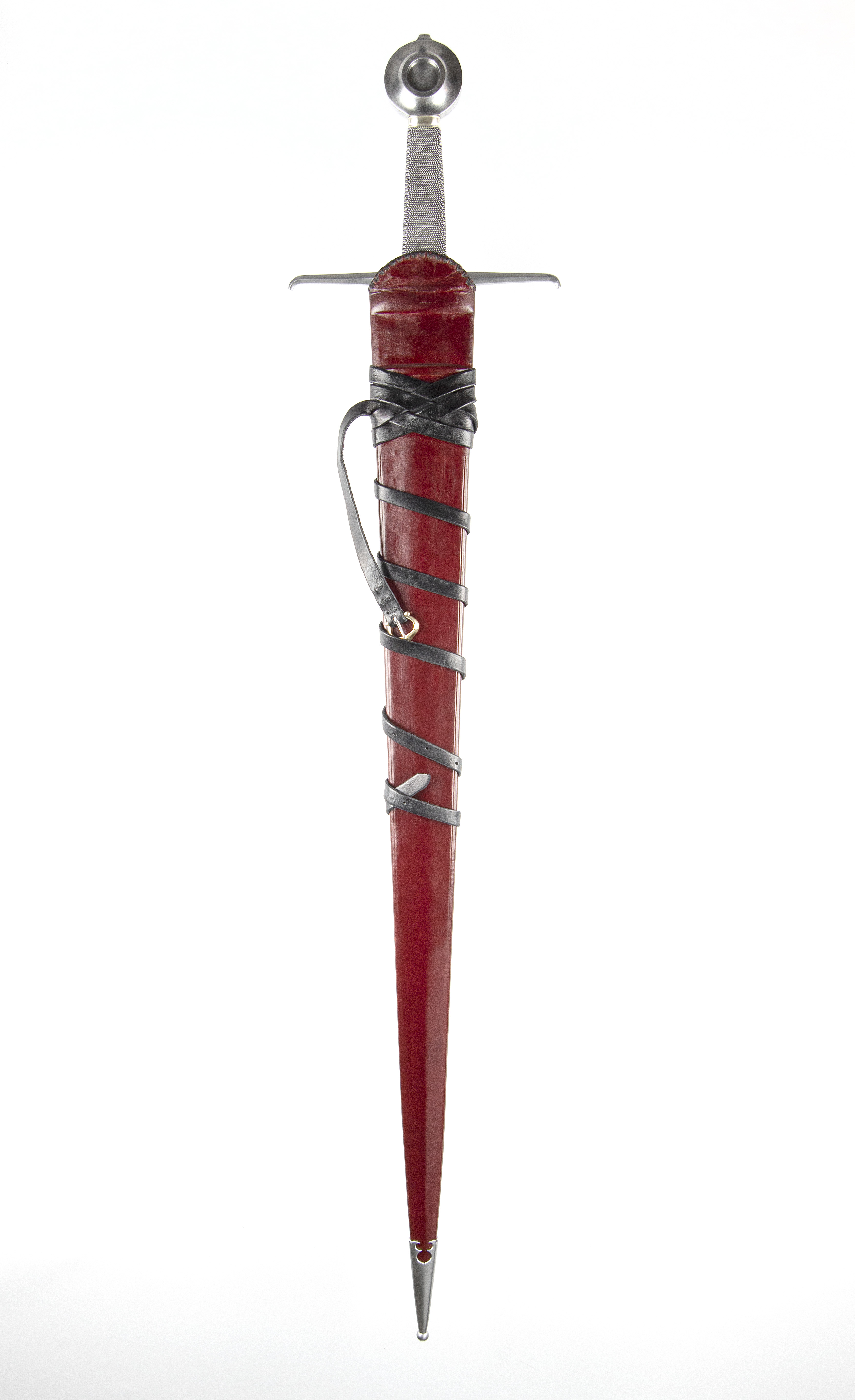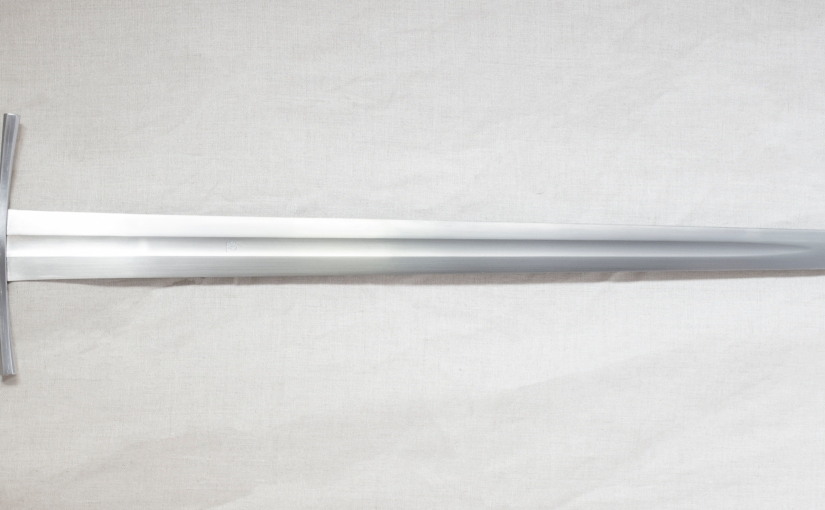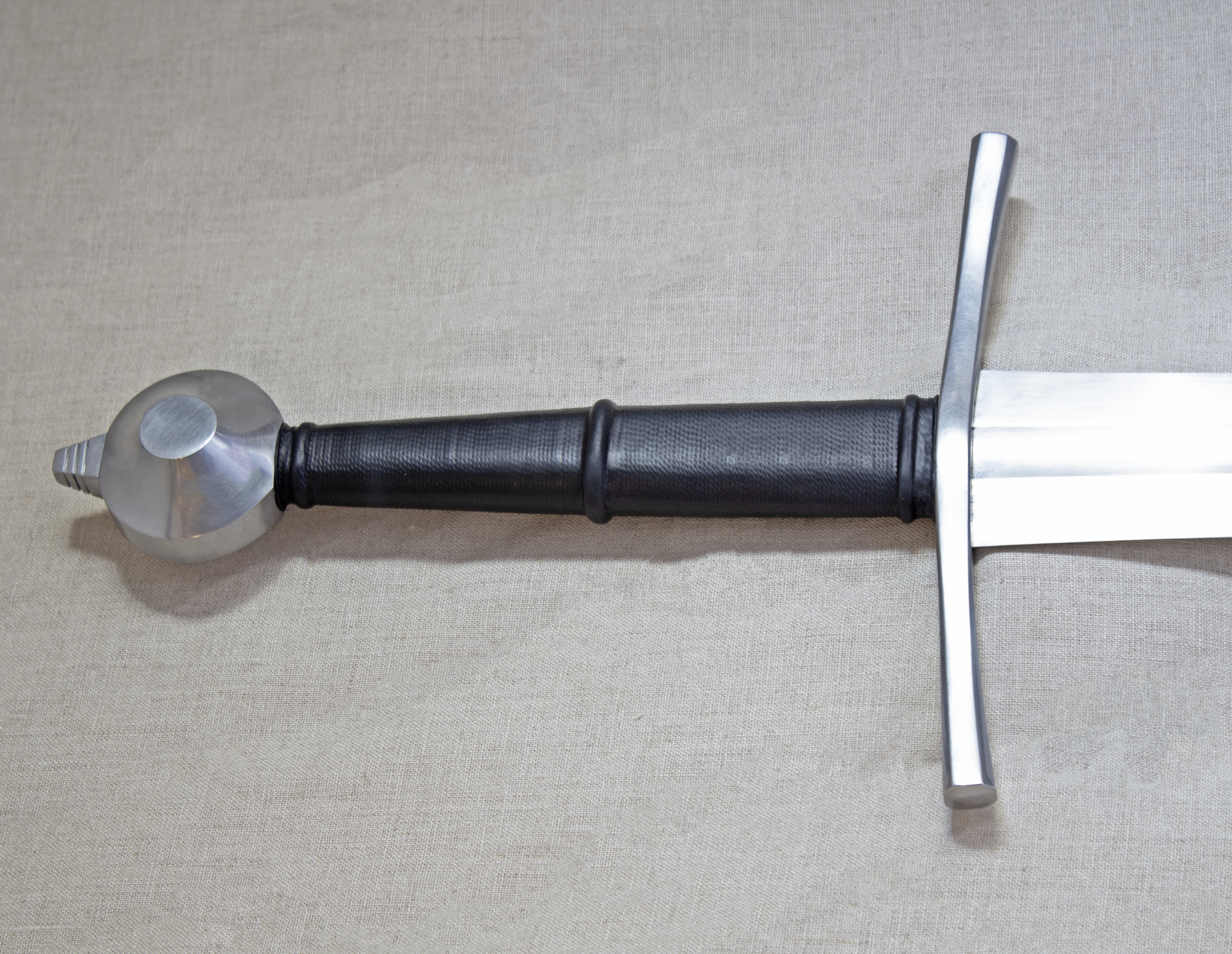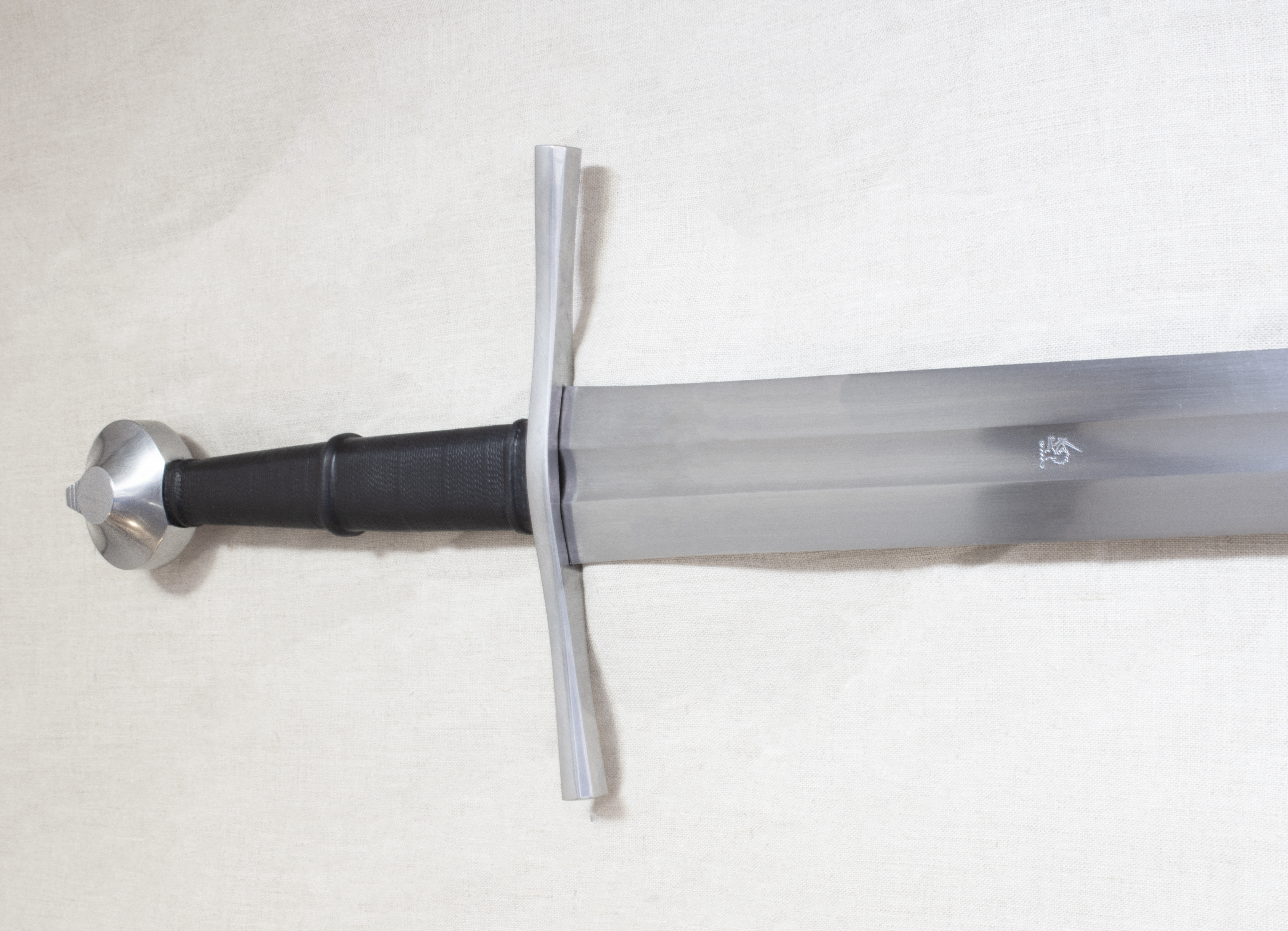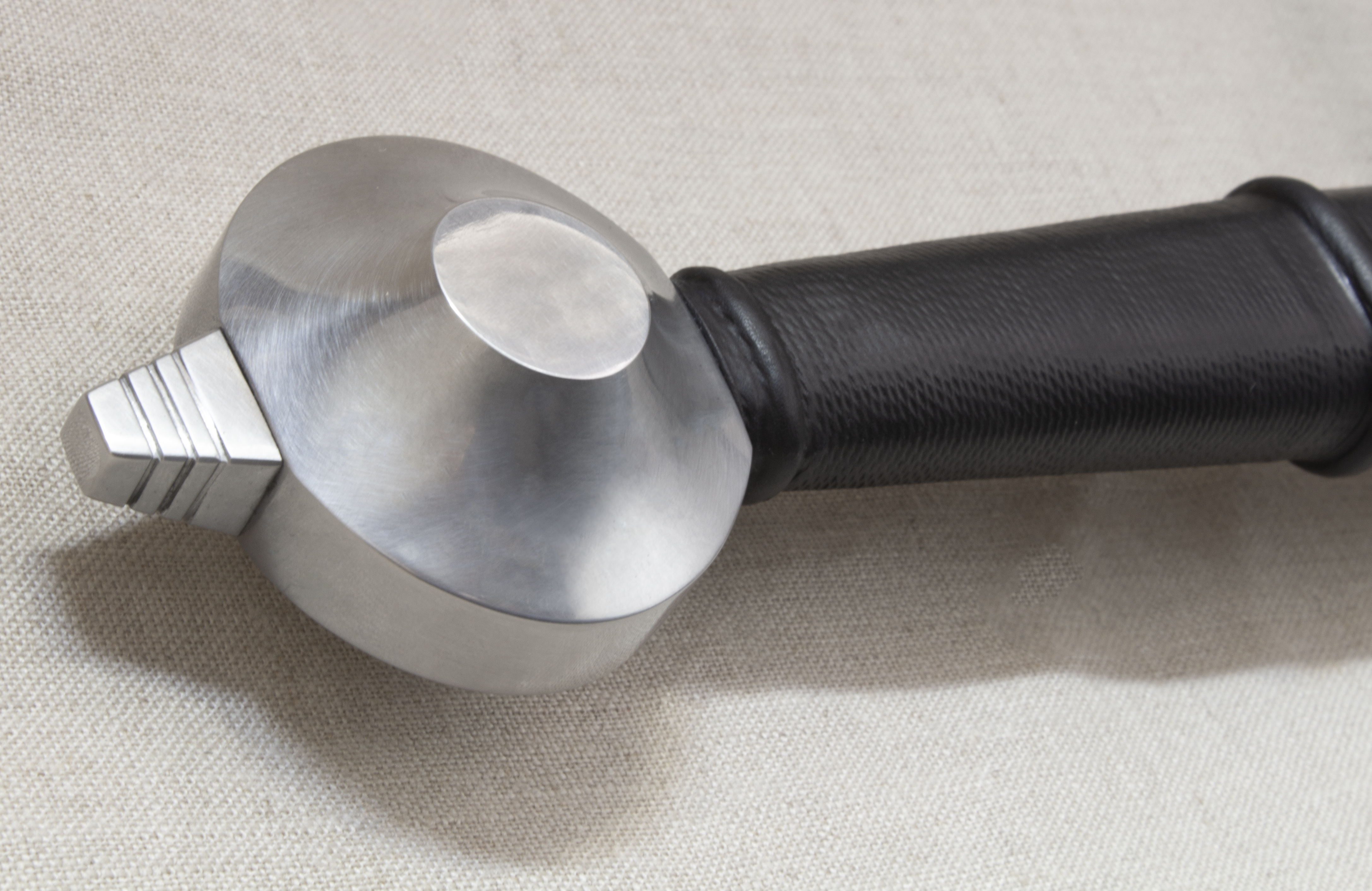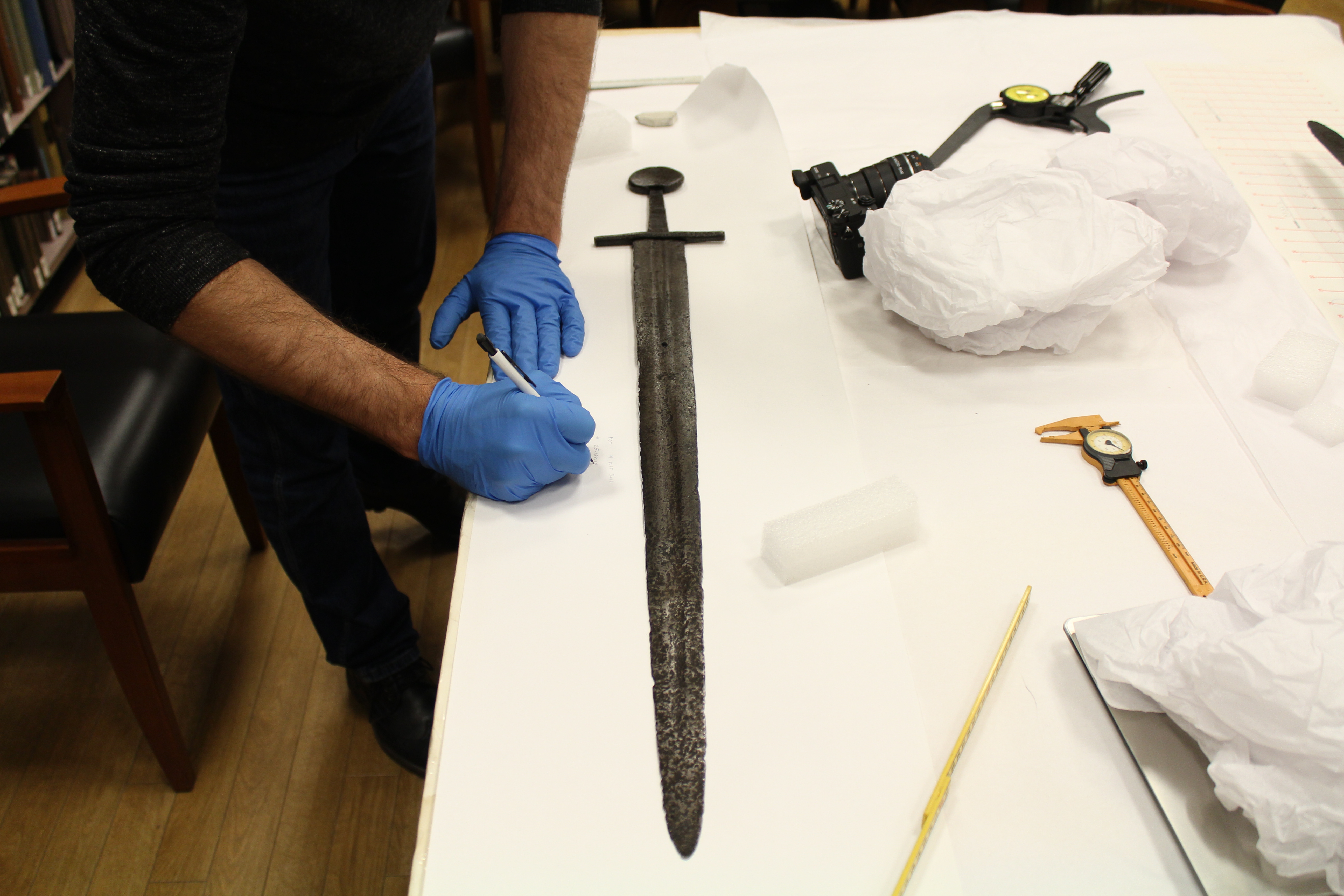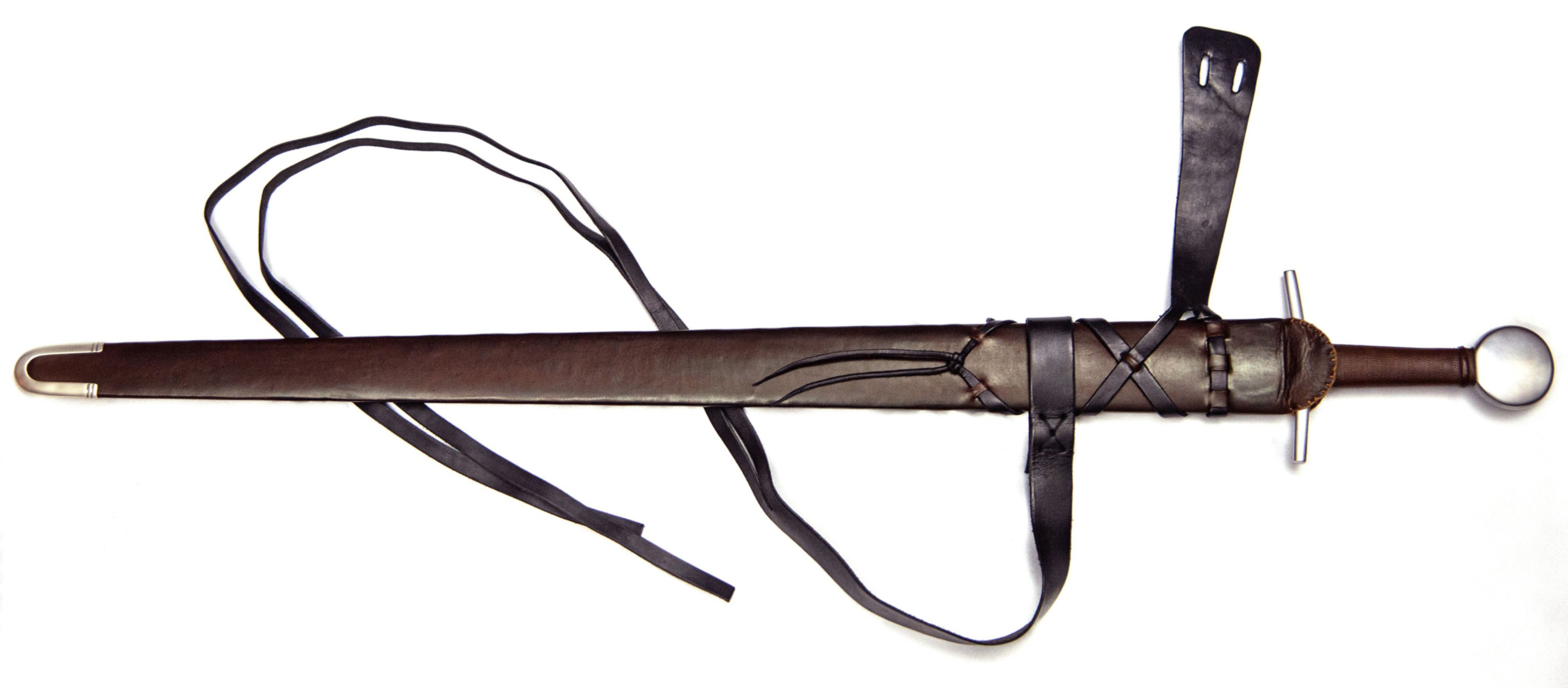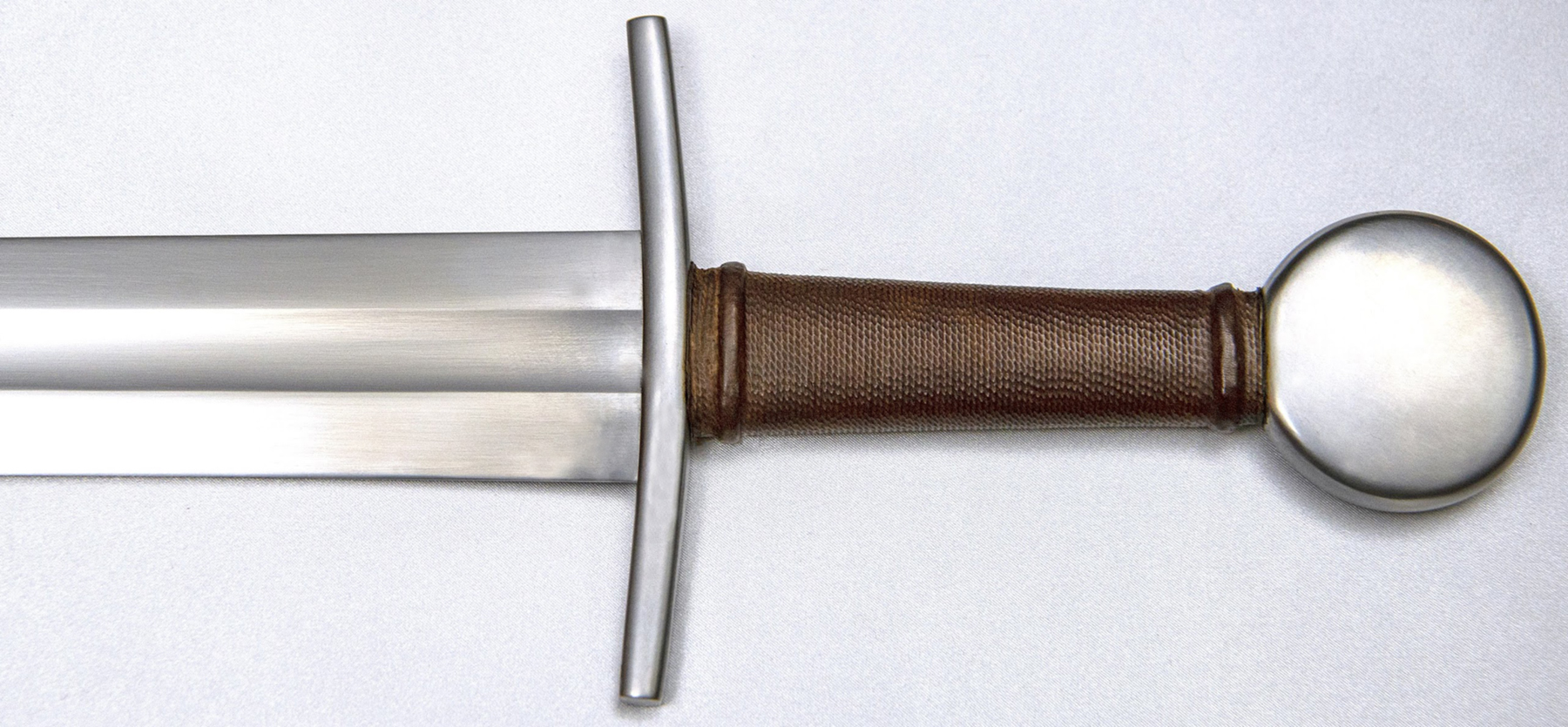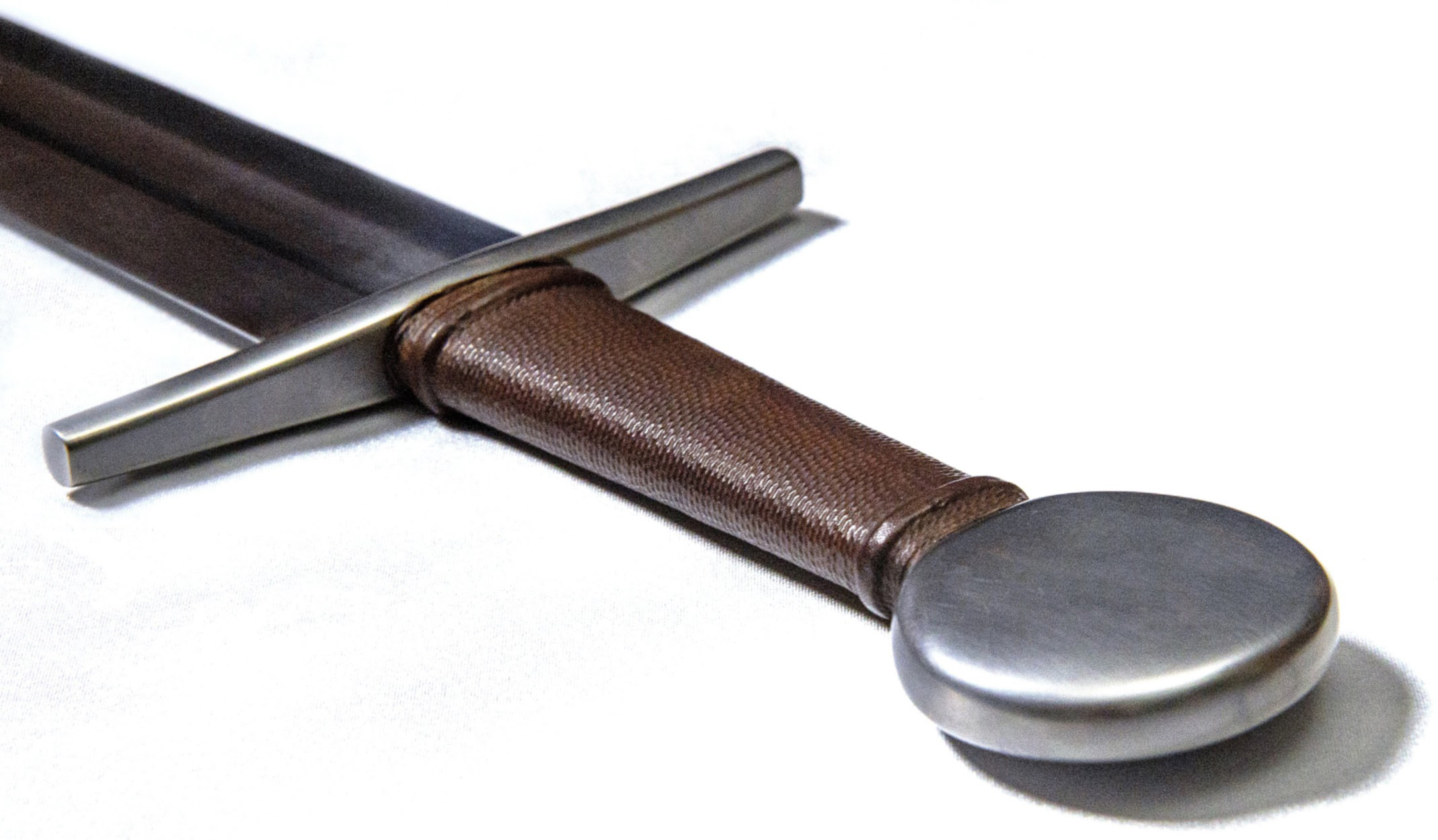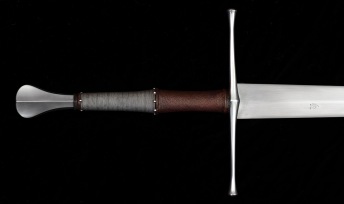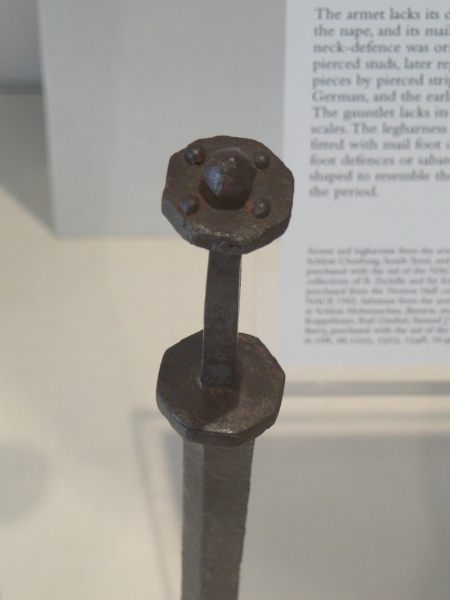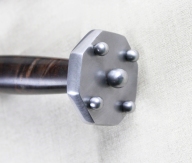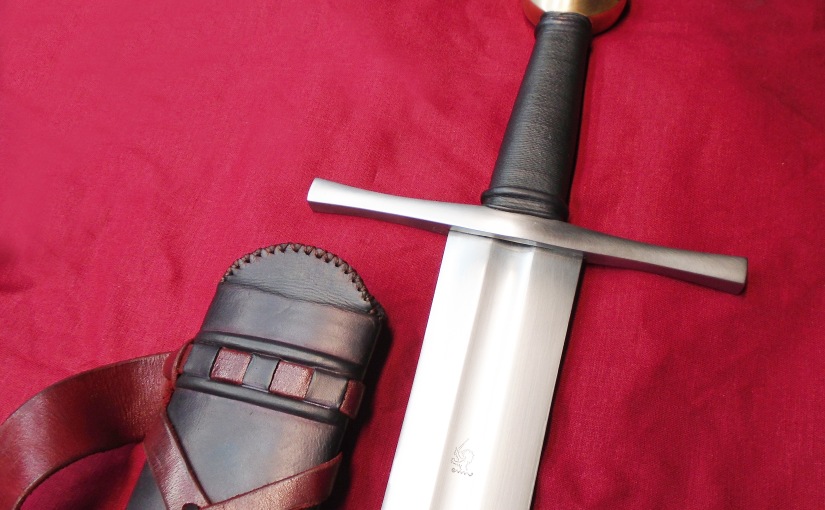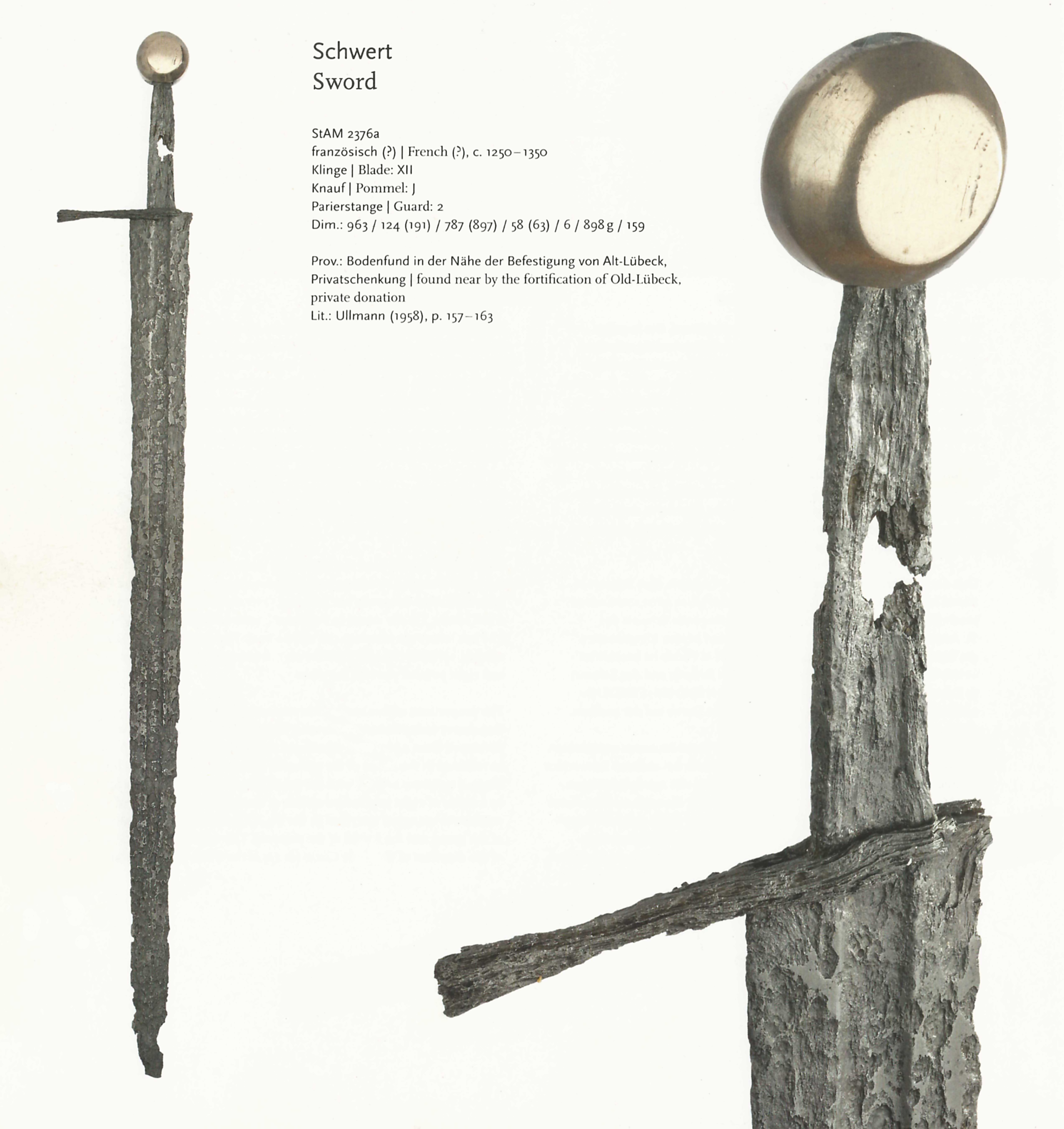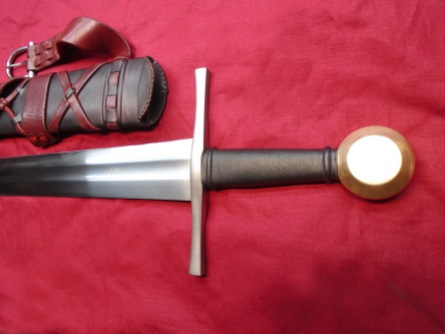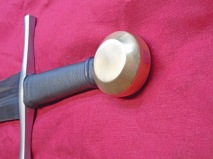
Inspired by a late 13th century – early 14th century sword that I documented with Swordsmith Peter Johnsson in Sweden. The sword features a spherical pommel that we observed on a number of swords in Sweden (including the original sword that the Albion Mark Tritonia is based on). The blade has a secondary bevel and a reinforced tip. These features combined with a “chef knife” thin area behind the tip, make this sword a real cutter.
Stats:
Overall Length = 39.5″ (100,3 cm)
Blade Length = 32.5″ (82,6 cm)
Blade Width = 2.9″ (7,5 cm)
Weight = 3 pounds 3 oz (1448 grams)
Point of Balance = 4.0″ (10,0 cm)
Center of Percussion = 23.1″ (59,0 cm )
Steel = 1075 blade, mild steel fittings
Grip Color: Dark Mahogany
Price: $2,300 $2070 (domestic US shipping included) SOLD
Contact me at eric@crownforge.net if you are interested in purchasing this sword.
If you like what you see, be sure to click “Like” at the bottom of this post.
Photos:
Photos: Michael Gard Photography
Review from Owner:
Recently, I had an opportunity to get two swords from Eric at the same time. This is not my first order from Eric, so I do not need to specify that I had full confidence in Eric’s work. The shipment of the two swords to Belgium was impeccable. In addition, Eric’ communication during the process was great.
Back to the order: the first sword was a Norman-type sword with a curved guard that was like an original in Alfred Geibig’s work. I asked Eric to mix elements of the Albion Soberg with the Next Gen Gaddjhalt. The result was a long blade with a typical brazil nut pommel. Eric perfectly understood the dynamics of this type sword. This was evident when he suggested different hilt proportions for me to choose from that would help to maximize the sword’s performance. The result is perfect! It is definitely a horseman’s sword with a lively feel, good cutting power and a long reach. It is not easy to combine all these characteristics in one sword.
The second sword was a XIIIb. This sword is my surprise sword of the year. I was not initially drawn to this sword. Eric had made this sword for the Atlanta Blade Show, but it did not sell at the show. This was probably because of its unique aesthetics. These spherical pommel swords are not common in many parts of Europe, but there are several excellent examples in Scandinavia that Eric was able to document with fellow maker, Peter Johnsson. While Eric was working on the Norman sword, I decided to purchase the XIIIb. When it was time to ship the Norman sword, Eric shipped the XIIIb with it. The swords were well packaged and arrived in perfect condition.
Recently, I was able to do some test cutting with both swords. I immediately liked the feel and cutting power of the Norman sword. This was not my first sword of this style, so I was familiar with how it should cut and feel. It was 10 out of 10 for cutting. The big surprise, however, was the XIIIb! After cutting with this sword, I fell in love with it. It is the perfect sword for fighting on foot. The wide, thin blade, combined with excellent balance, makes this sword a very effective cutter. I would compare the cutting power to bigger hand-and-a-half swords like the Albion Baron. Even though the spherical pommel is large, its shape was quite comfortable during the cutting tests. In short, I love this sword!
In closing, I don’t think it is necessary to mention, but I will anyway: Eric’s fit and finish is excellent. So, in the end, I now have two successful orders from Eric to add to my collection.
–Pierre Gossart


